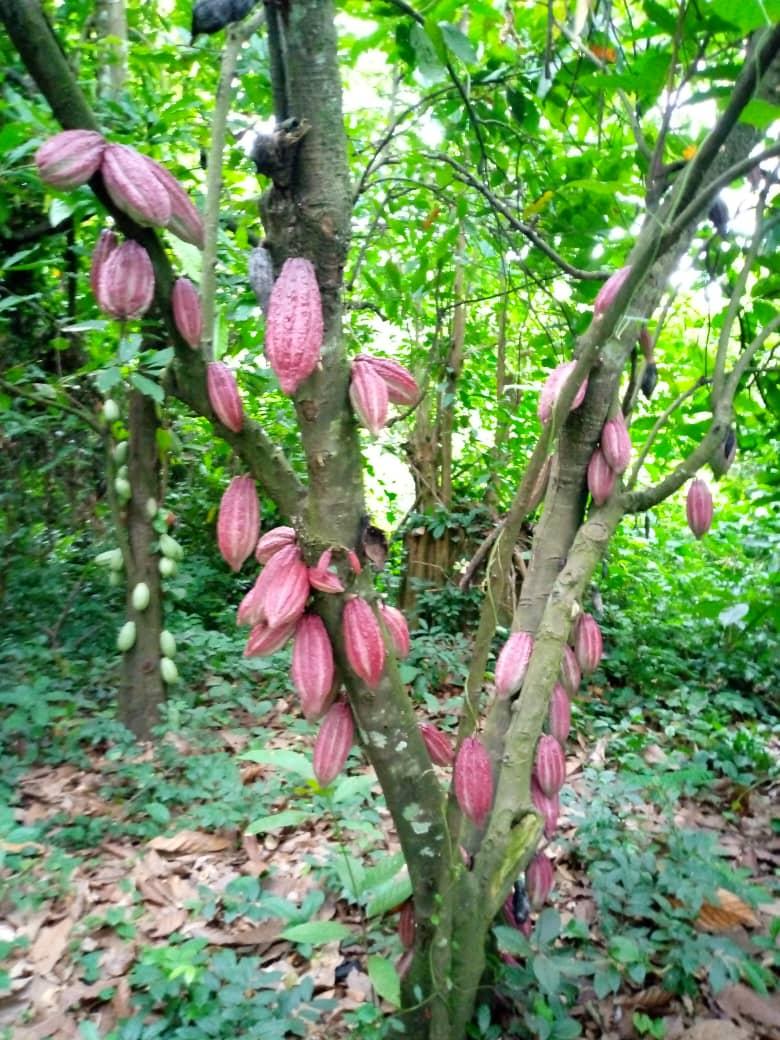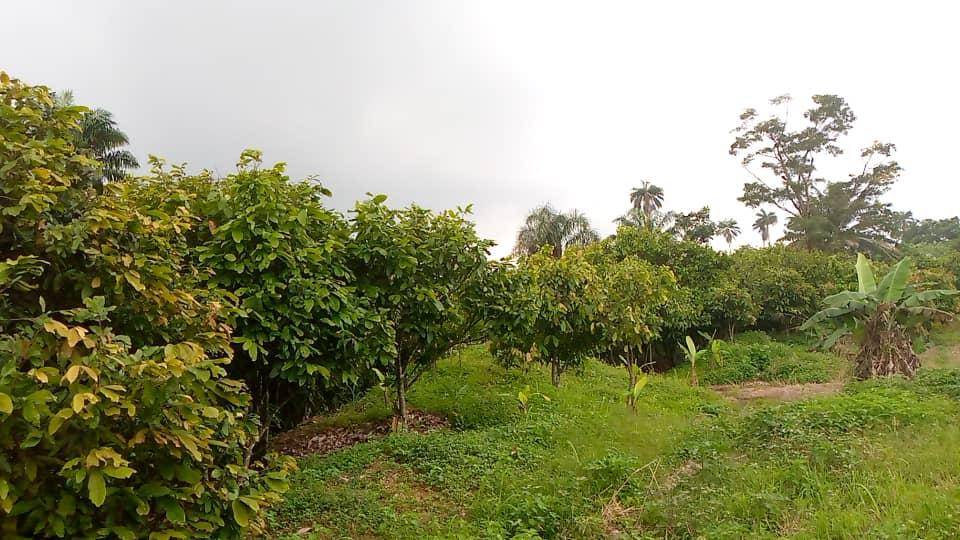Climate change is threatening West Africa’s cocoa industry due to rising temperatures and unpredictable rainfall, leading to environmental damage and socio-economic issues. In Nigeria, modern farming methods that promote full-sun cocoa have caused deforestation and loss of biodiversity.
A new study led by two former master’s students at the Environmental Change Institute (ECI) has found traditional cocoa agroforestry is gaining renewed interest as a way to adapt to climate change and restore forests.
"Full sun cocoa" refers to a method of growing cocoa trees where they are planted without any shade trees, exposing them to direct sunlight throughout the day, aiming to maximise yield by allowing for more light exposure, but often at the cost of environmental concerns like deforestation and biodiversity loss. This is in contrast to traditional cocoa farming which typically involves growing cocoa trees under a canopy of shade trees – known as agroforestry where trees are integrated into the farming system.

L-R: Anita Koralewicz and Jan Vlcek
Former ECI master’s students Anita Koralewicz and Jan Vlcek began their research whilst studying the MSc Environmental Change Management (ECM) at the ECI. Their paper has been published in Agroforestry Systems: Mapping the extent and exploring the drivers of cocoa agroforestry in Nigeria, insights into trends for climate change adaptation.
Their study focused on Ekiti State, Nigeria and assessed how much land is used for full-sun cocoa versus agroforestry and to understand the factors influencing land use decisions. Using satellite data from the European Space Agency (Sentinel-2) and interviews with policymakers and local farmers in 15 of 16 local government areas, the study found that agroforestry covers 18% of Ekiti’s land, while full-sun cocoa covers 13%. Overall, 57% of cocoa farming in Ekiti uses agroforestry methods.

They found that 74% of farmers use agroforestry or mixed methods, despite government support for full-sun cocoa. This shows that farmers still value agroforestry. The findings can help improve tracking of cocoa-driven deforestation and guide policies for better climate change adaptation in cocoa-growing regions.
Anita said:
Overall, the study was successful in uncovering new insights and strengthening collaboration between Oxford and the Ekiti State Government. We were surprised to find that agroforestry is the dominant form of cocoa production in Ekiti State.
"In other major cocoa-producing regions of West Africa, agricultural modernisation efforts have pushed for full-sun cocoa farming to maximise yields. However, our findings suggest that tree retention on farms is driven by multiple factors, including farmers’ continued appreciation of traditional growing practices, conflicting policies and weak enforcement, and limited funding and training for adopting new methods.”

Jan added:
It was really interesting to see that agroforestry was the dominant method of cocoa growing in the state and I definitely didn't expect because it is quite different from neighbouring countries. My personal hypothesis is that it had a lot to do with the shift in Nigeria's economy away from cocoa towards oil & gas in the 2nd half of 20th century which kind of slowed down the changes in cocoa sector.
"It's interesting to see how over time, the general view on the 'best way' to grow cocoa shifted from agroforestry, towards full-sun and now is moving back to agroforestry - so the fact that that's how it is still grown in Ekiti could be a great basis for the State for the years to come. However, agroforestry is super complicated and there hasn't been enough research into how to utilise the systems well which makes it currently economically very challenging for the farmers.”

The paper was borne from Anita and Jan’s dissertations and thanks to successful funding applications to the ECI’s Environmental Change Management dissertation prize (a grant to support publication of excellent MSc theses).
Dr Mark Hirons, Senior Researcher, who supervised Anita’s thesis and is a co-author on the paper, said:
It is great to see this interdisciplinary and collaborative project come to fruition, it is what the ECM is all about!”.
Read the paper in full in Agroforestry Systems: Mapping the extent and exploring the drivers of cocoa agroforestry in Nigeria, insights into trends for climate change adaptation
Read Anita and Jan’s Q&A about why they chose this study and what they are doing now.

